Heirloom tomato farming has gained popularity for its commitment to preserving biodiversity and offering a range of flavors and textures. Unlike commercially grown tomatoes, heirloom tomatoes are cultivated for their unique characteristics and historical significance. Heirloom tomato seeds are passed down through generations, ensuring the survival of rare and delicious varieties.
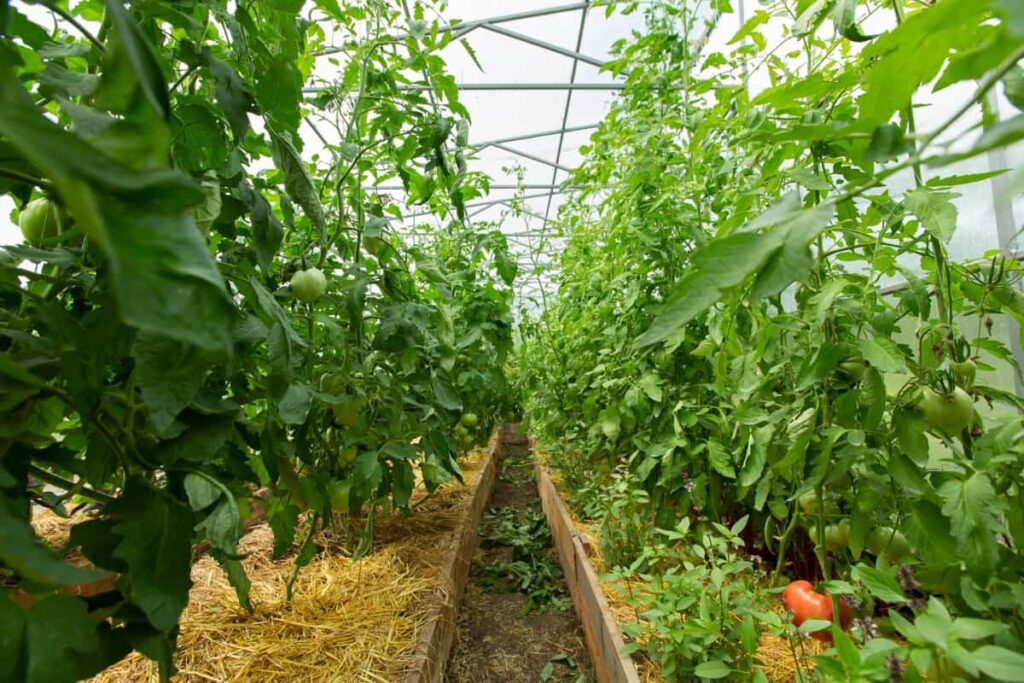
Enthusiasts of heirloom tomato farming often focus on organic methods, enhancing the natural quality of these tomatoes. Fast-growing heirloom tomatoes have made it easier for farmers and gardeners to enjoy these fruits without waiting. Heirloom tomato plant care involves specific techniques to maintain their distinctive qualities. Farmers contribute to agricultural diversity by growing heirloom tomatoes and enjoying a rich harvest of some of the best-tasting heirloom tomatoes.
The History and Importance of Heirloom Tomatoes in Agriculture
Heirloom tomatoes have a rich history, tracing when farmers selected and saved seeds from their best-tasting and most resilient plants. This practice allowed the development of various heirloom tomato varieties, each with unique flavors and appearances.
The importance of heirloom tomatoes in agriculture lies in their genetic diversity, which is crucial for food security and adaptability to changing environmental conditions. Unlike hybrid varieties, heirloom tomatoes are open-pollinated, meaning they retain their characteristics from generation to generation. This trait is vital for preserving the genetic diversity of tomato species.
Different Types of Heirloom Tomatoes
Heirloom tomatoes exhibit a diverse range of shapes, sizes, and colors, each contributing to a distinct flavor profile. Some popular types include cherry, beefsteak, and plum tomatoes. Cherry heirloom tomatoes are small, round, and often sweet, making them perfect for salads and snacking.
In case you missed it: 14 Steps to Start Tomato Farming in the Netherlands: Yield per Hectare and Dutch Tomato Varieties
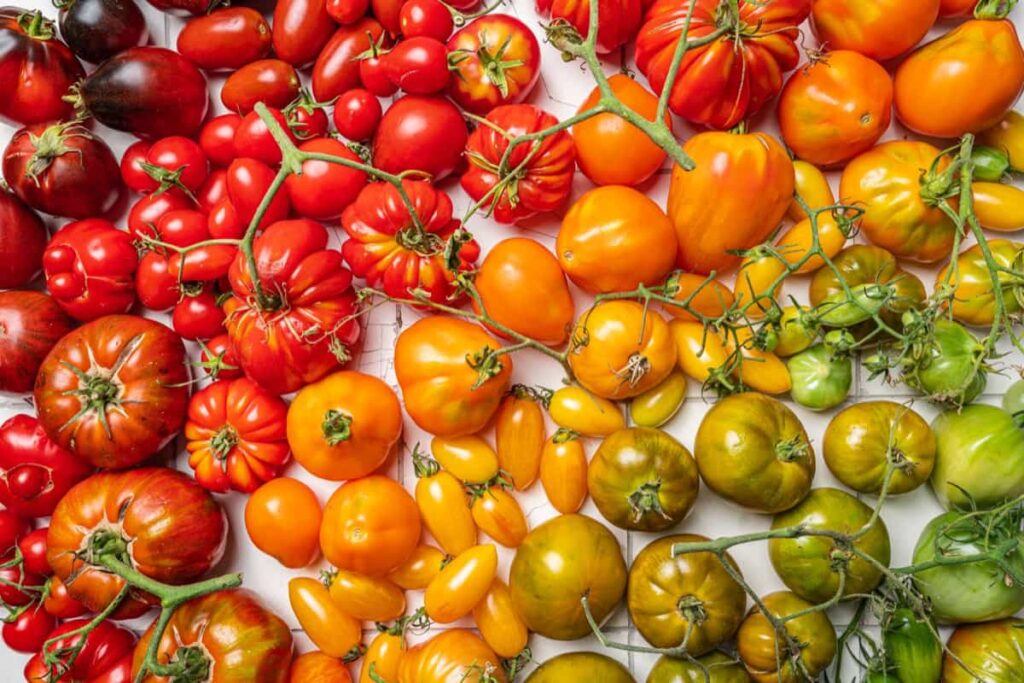
Beefsteak heirloom tomatoes are large, meaty, and ideal for sandwiches or cooking. Plum heirloom tomatoes, known for their elongated shape, are excellent for sauces and canning due to their fewer seeds and firmer flesh. The largest heirloom tomatoes are typically beefsteak varieties, which can weigh several pounds. Each type of heirloom tomato has its growing requirements and is suited to different climates and soil types, making them a fascinating group to explore for amateur and professional growers.
Best Varieties for Your Heirloom Tomato Farm
Choosing the best varieties for your heirloom tomato farm depends on your climate, soil type, and personal taste preferences. For those new to heirloom tomato farming, starting with fast-growing tomatoes can be rewarding as they produce fruit quickly. Some of the best-tasting heirloom tomatoes include Brandywine, Cherokee Purple, and Green Zebra, each known for its distinctive flavor and texture.
Brandywine tomatoes are large, pink, and have a sweet, almost creamy taste. Cherokee Purple tomatoes are notable for their deep, rich flavor and unique purplish color. Green Zebra tomatoes, with their striking green and yellow stripes, offer a tangy flavor that adds zest to dishes. When selecting heirloom tomato seeds, consider the specific needs of each variety, such as sunlight, water, and soil conditions. Organic heirloom tomatoes can thrive with the right care, providing a bountiful and flavorful harvest.
How to Prepare the Soil for Heirloom Tomato Cultivation
Preparing the soil for heirloom tomato cultivation ensures healthy growth and a bountiful harvest. Choose a location with ample sunlight, as tomatoes thrive in warm conditions. Heirloom tomatoes thrive in soil with a mildly acidic to neutral pH range, generally falling between 6.0 and 7.0. Enhance the soil quality by incorporating organic materials like compost or well-aged manure.
In case you missed it: Pests Affecting Tomato Crops at Flowering Stage: Symptoms, Control, and Prevention
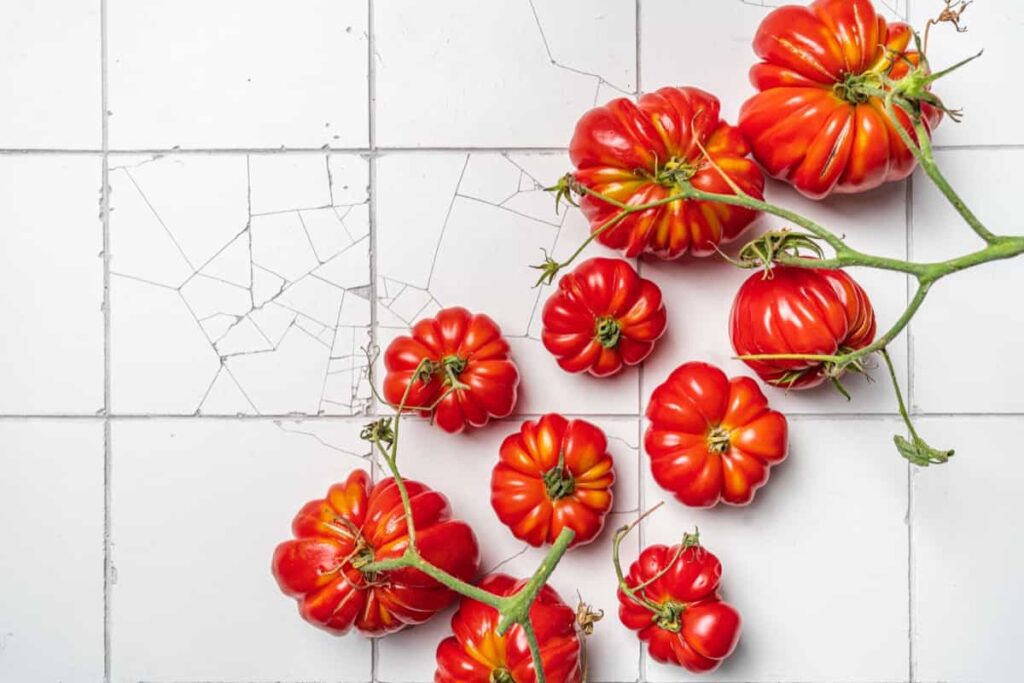
Ensure proper drainage since tomatoes are sensitive to overly wet conditions. If required, you may want to raise the beds or introduce sand to enhance drainage. Applying a layer of mulch can aid in moisture retention, weed control, and soil temperature regulation. Rotating your tomato crops each year is beneficial to prevent soil-borne diseases and maintain soil health. Preparing the soil well sets the foundation for successful heirloom tomato cultivation, allowing these plants to thrive and produce flavorful fruits.
Best Planting Techniques for Heirloom Tomato Seeds or Seedlings
When planting heirloom tomato seeds or seedlings, proper technique can significantly impact the success of your crop. For seeds, start them indoors 6-8 weeks before the last expected frost date in your area. Utilize a premium seed starting medium and sow the seeds at a depth of approximately 1/4 inch in compact containers or seed trays. Keep them warm and moist until germination. Once the seedlings have developed their first set of true leaves and are sturdy enough, they can be transplanted outdoors.
For transplanting homegrown or purchased seedlings, harden them off gradually to acclimate them to outdoor conditions. Plant them in the well-prepared soil with proper spacing of usually 24 to 36 inches between each to promote adequate air circulation. Planting them deeper than in the pots can encourage stronger root growth. Ensure the soil is warm enough, as cold soil can stunt growth. Careful attention to planting depth, spacing, and timing can lead to healthier heirloom tomato plants and a more productive harvest.
How to Care for Your Heirloom Tomato Plants
Caring for heirloom tomato plants involves several key practices to ensure healthy growth and productivity. Ensure you water your plants at the base to maintain dry foliage and minimize the chance of fungal infections. Heirloom tomatoes thrive with a regular feeding regimen, especially as they begin to produce fruit.
Utilize a well-balanced, general-purpose fertilizer, or one designed specifically for tomatoes. Additionally, remember the significance of pruning: eliminate any suckers growing at the junction of two branches to enhance air circulation and increase sunlight exposure. This also helps the plant focus its energy on producing fruit rather than excess foliage.
To help heirloom tomato plants grow well and stay safe from problems like diseases and pests, it’s a good idea to use stakes or cages for support. Be vigilant in inspecting for potential issues and promptly address any pest or disease problems to prevent their spread. Providing proper care, including watering, fertilizing, pruning, and providing support, will contribute to the successful cultivation and abundant yield of your heirloom tomato plants.
Effective Irrigation Strategies for Heirloom Tomato Farming
Effective irrigation is vital in heirloom tomato farming, as consistent moisture levels are key to producing high-quality fruit. Drip irrigation is highly effective because it delivers water directly to plant roots, minimizing wastage and lowering the chances of leaf diseases caused by overhead watering. It also allows for better control over the amount of water the plants receive.
In case you missed it: 15 Best Tomato Nettings to Support Trellis, Protecting from Insects, Squirrels. and Birds
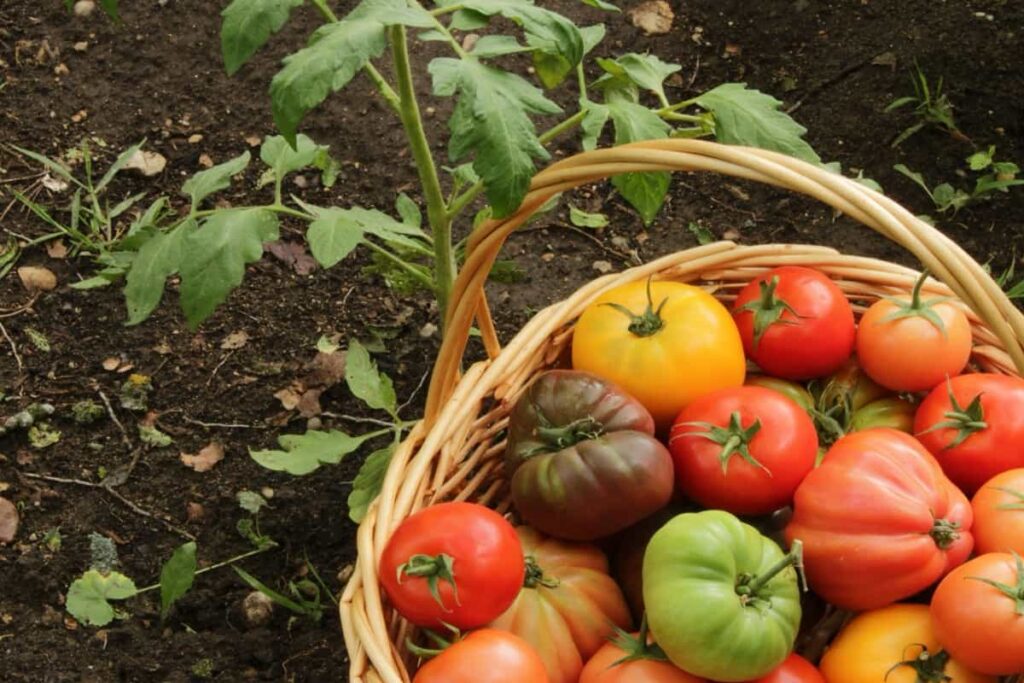
The frequency and amount of watering depend on your soil type and climate; sandy soils require more frequent watering, while clay soils retain moisture longer. To promote robust root development and enhance drought resistance, water the plants deeply but on a less frequent basis. Heirloom tomatoes typically need about 1-2 inches of water per week during the peak growing and fruiting stages.
It’s important to avoid watering fluctuations, as inconsistent moisture can lead to issues like blossom end rot or fruit cracking. Using mulch around plants can aid in soil moisture retention and decrease the need for frequent watering. Monitoring soil moisture and adjusting your irrigation practices as needed will ensure your heirloom tomatoes receive the right amount of water for optimal growth and fruit production.
Managing Pests and Diseases in Heirloom Tomato Crops
Managing pests and diseases is critical in heirloom tomato crops to ensure healthy plants and a successful harvest. Regular monitoring is key to detecting and controlling common problems like blight, aphids, and tomato hornworms. Implementing integrated pest management (IPM) strategies can effectively manage pests while minimizing harm to beneficial insects. This includes using physical barriers like row covers to protect young plants, introducing beneficial predators like ladybugs, and promptly removing affected leaves or plants to prevent the spread of disease.
Natural techniques such as neem oil or insecticidal soap are effective for managing minor infestations. To prevent diseases like blight, employ crop rotation and maintain proper air circulation around plants. Additionally, watering at the plant base to keep foliage dry can reduce the risk of fungal diseases. By being vigilant and using a combination of preventive and reactive measures, you can effectively manage pests and diseases in your heirloom tomato crops.
In case you missed it: 15 Best Tomato Cages with Price for Pots, Large Plants, and Indeterminate Tomato Vines
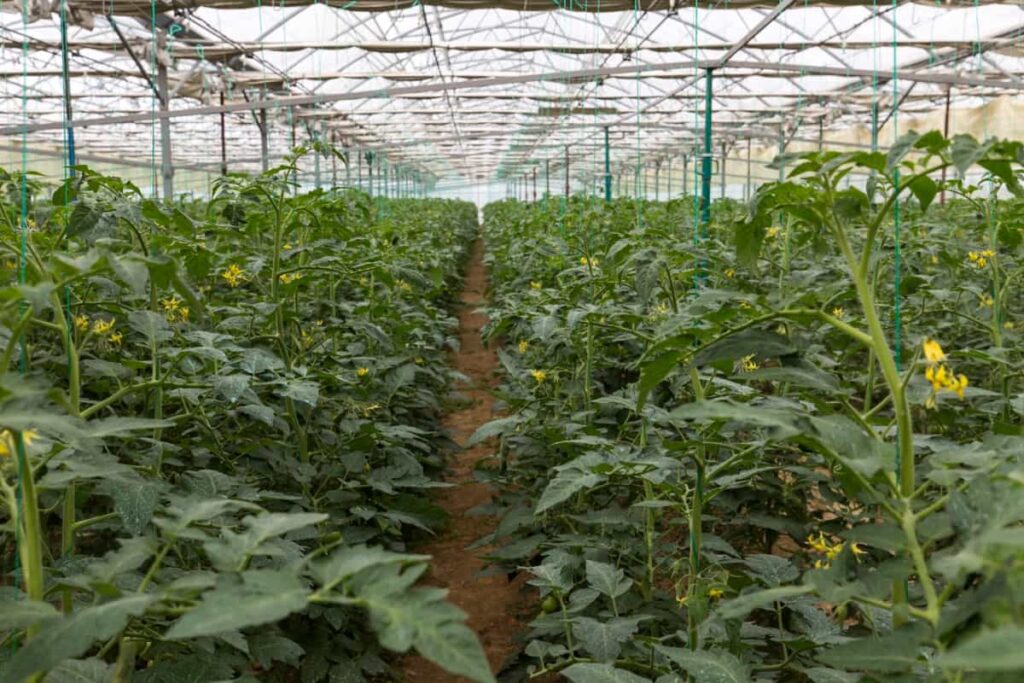
Maximizing Heirloom Tomato Yields with Organic Fertilization
Organic fertilization is a key component in maximizing yields in heirloom tomato farming, as it provides essential nutrients while maintaining soil health. Start by enriching the soil with well-rotted compost or aged manure before planting, which offers a rich source of organic matter and nutrients. As heirloom tomatoes grow, they benefit from additional feeding, particularly when they begin to set fruit. Use organic fertilizers high in phosphorus and potassium to support fruit development and overall plant health.
Compost tea, fish emulsion, and bone meal are superb organic choices for year-round application. It is crucial to adhere to suggested application rates and prevent excessive fertilization, which may result in vigorous foliage growth at the detriment of fruit yield. Regular soil testing can help you understand your soil’s nutrient levels and adjust your fertilization strategy accordingly. By using organic fertilization methods, you can enhance the growth and productivity of your heirloom tomato plants while maintaining the integrity of the soil ecosystem.
Effective Pruning and Training Techniques for Heirloom Tomato Plants
Pruning and training heirloom tomato plants are essential practices that improve plant health and increase fruit yield. Start by identifying the type of tomato plant—determinate or indeterminate—as this will guide your pruning and training approach. Pruning is most advantageous for indeterminate varieties, as it encourages continuous growth and fruit production throughout the season.
Remove suckers, which are small shoots that grow in the leaf axils, to direct the plant’s energy into fruit production rather than excessive foliage. However, avoid over-pruning, as leaves are necessary for photosynthesis and fruit protection. Training tomatoes on stakes, trellises, or cages supports their growth, keeps fruit off the ground, and improves air circulation, reducing disease risk.
Secure the plants loosely to the supports with soft ties, allowing room for growth. For specific types of plants, minimal pruning is necessary because they naturally reach a certain size and yield a full crop in one go. Proper pruning and training enhance plant health and productivity and make it easier to manage the plants and harvest the fruit.
When to Harvest and Store Heirloom Tomatoes at Peak Flavor
Knowing when to harvest and store heirloom tomatoes at peak flavor is crucial for enjoying their full taste potential. Heirloom tomatoes are best harvested when they have fully ripened on the vine and exhibit their true color, whether red, purple, yellow, or striped. The fruit should feel slightly soft and come off the vine easily.
Once harvested, store the tomatoes at room temperature, as refrigeration can diminish their flavor and texture. If you need to extend their shelf life, only refrigerate fully ripe tomatoes and bring them back to room temperature before eating. Place slightly underripe tomatoes in a paper bag with a banana or apple to hasten ripening. Handling tomatoes gently is important to prevent bruising. Proper harvesting and storage techniques are key to enjoying the exceptional flavors of heirloom tomatoes.
How to Save Heirloom Tomato Seeds for Next Crop
Saving heirloom tomato seeds for the next crop is a rewarding process that helps preserve unique varieties. Choose healthy, ripe tomatoes from your best plants for seed saving. Dice the tomato and carefully remove the seeds and surrounding gel. Ferment the seeds by placing them in a jar with water for 2-4 days. This process removes the gel coating and helps prevent disease.
Once a moldy film appears on the surface, rinse the seeds thoroughly to remove all residue. Spread the clean seeds on a paper towel or screen to dry for a few days without exposure to direct sunlight. Place the dehydrated seeds in a cool, dry location within a properly labeled envelope or container. Properly saved, heirloom tomato seeds can remain viable for several years, allowing you to continue growing your favorite varieties.
The Yield of Heirloom Tomatoes per Plant and Per Acre
The yield of heirloom tomatoes can vary greatly depending on the variety, growing conditions, and care provided. On average, a single heirloom tomato plant can produce 10 to 20 pounds of fruit throughout the growing season. Factors such as plant spacing, soil fertility, watering, and pest management are significant in determining the yield.
In case you missed it: Nutritional Deficiencies in Tomato Crop: How to Fix, Solutions, and Treatment
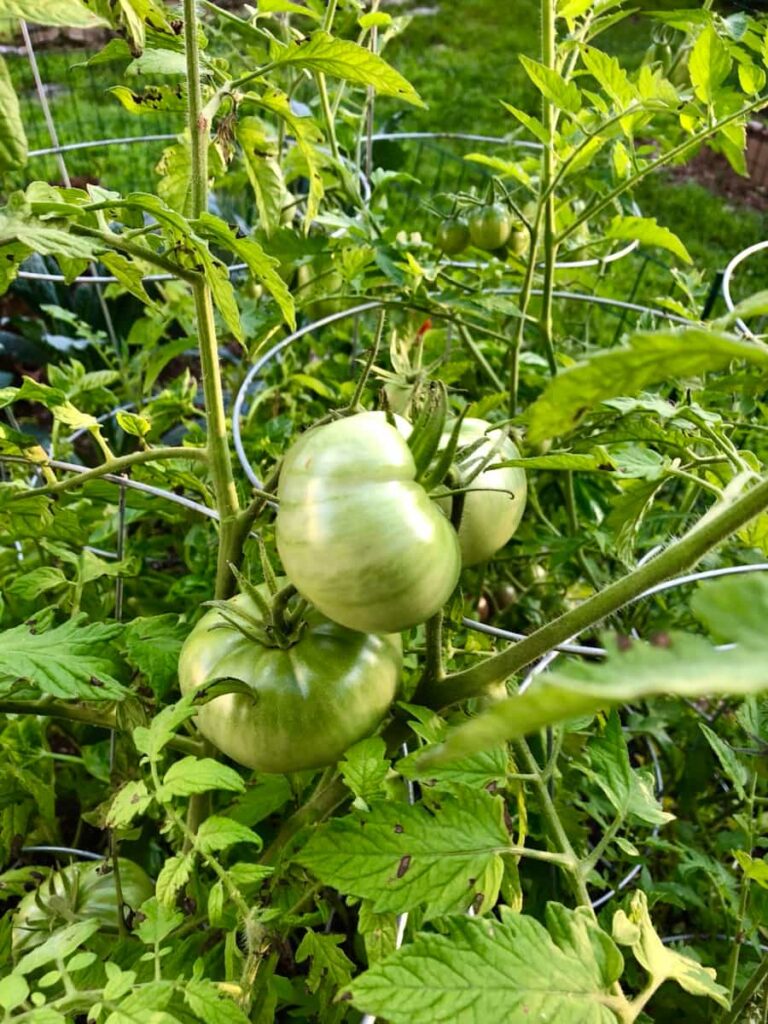
In larger farming scenarios, the yield per acre can range widely, with averages often between 10,000 to 20,000 pounds per acre, depending on the factors above. High-density planting can increase yield but may also require more intensive management. It’s important to note that while heirloom varieties may not yield as heavily as some hybrid types, their value lies in their unique flavors, textures, and histories. With proper care and management, heirloom tomato crops can be both productive and rewarding.
Conclusion
Heirloom tomato farming is a fulfilling endeavor combining the preservation of agricultural heritage with the joy of cultivating and enjoying diverse flavors and colors. Through careful cultivation, harvesting, and seed-saving practices, gardeners and farmers alike can sustain the legacy of these unique and delicious varieties for future generations.
- Management Pests and Diseases in Your Cotton Field
- Sheep Farming Business Plan for Beginners
- Aquaponic Farming at Home: A Step-By-Step Guide
- Profitable Village Farming Business Ideas in 2024
- High-Yield Aquaculture: Fast-Growing Fish for Farming
- Effective Fish Pond Construction Techniques for Beginners
- Irrigation and Water Management in Pineapple Farming
- Blossom to Harvest: Mastering Flowering and Pollination in Papaya Farming
- Pig Fattening Essentials: From Selection to Sale for Beginners
- Raising Wagyu Cattle: A Complete Guide for Premium Beef Production
- Soil Types and Their Water Holding Capacity
- Optimizing Irrigation Schedules for Coconut Groves for Enhanced Yield
- Espresso Your Garden: Coffee Grounds for Healthier Acid-Loving Plants
- The Best Soil Mix for Snake Plants: How to Mix Your Own Snake Plant Soil
- Green Thumb Success: Expert Tips for Cultivating Greenhouse Beans All Year Round
- Bloom All Year Round: The Ultimate Guide to Indoor Hyacinth Care
- Eco-Friendly Gardening: How to Make Liquid Fertilizer from Kitchen Waste
- Ultimate Guide to Grow Anise in Pots: Explore Seed Propagation to Harvesting
- Guide to Raising Chester White Pigs: Discover Breed Facts to Growth Management
- Mastering the Elegance: The Ultimate Guide to Weeping Cherry Tree Care, Planting, and Maintenance
- Ultimate Guide to Planting Garlic in Grow Bags: Growing Strategies for Beginners
- How to Fix Spider Plant Leaf-Related Problems: Natural and Organic Remedies
- 10 Reasons Why Your Tulsi Plant is Shedding Leaves: Home Remedies and Solutions
- Optimizing Growth and Yield: The Advantages of Palm Bunch Ash Fertilizer
- Utilizing Neem Oil Extract as a Natural Pesticide for Hydrangea
- From Soil to Harvest: Various Ways in Which Farmers Can Use AI Tools
- Steps to Encourage and Induce Citrus Flowers: A Comprehensive Guide
- How to Fix Snake Plant Leaf-Related Issues: Natural and Organic Remedies
- Transform Your Garden into a Fragrant Oasis with Raat Ki Rani (Night Blooming Jasmine)
- Discover the Ideal Chicken Breeds for Philippine Farms
- How to Create a Poultry Egg Farm Business Plan for Profits
- Grow Lemon Cucumbers Like a Pro: Insider Techniques for Bountiful Yields
- Ultimate Guide to Caring for Your Pink Princess Philodendron: Tips for Thriving Variegation
- Areca Nut Profit Per Acre: Calculating Yield and Cost of Cultivation
- How Kaveri Chicken is Becoming a More Profitable Breed in Indian Backyards
- Transform Your Barn: 9 Steps to Convert a Horse Stall into a Chicken Coop
